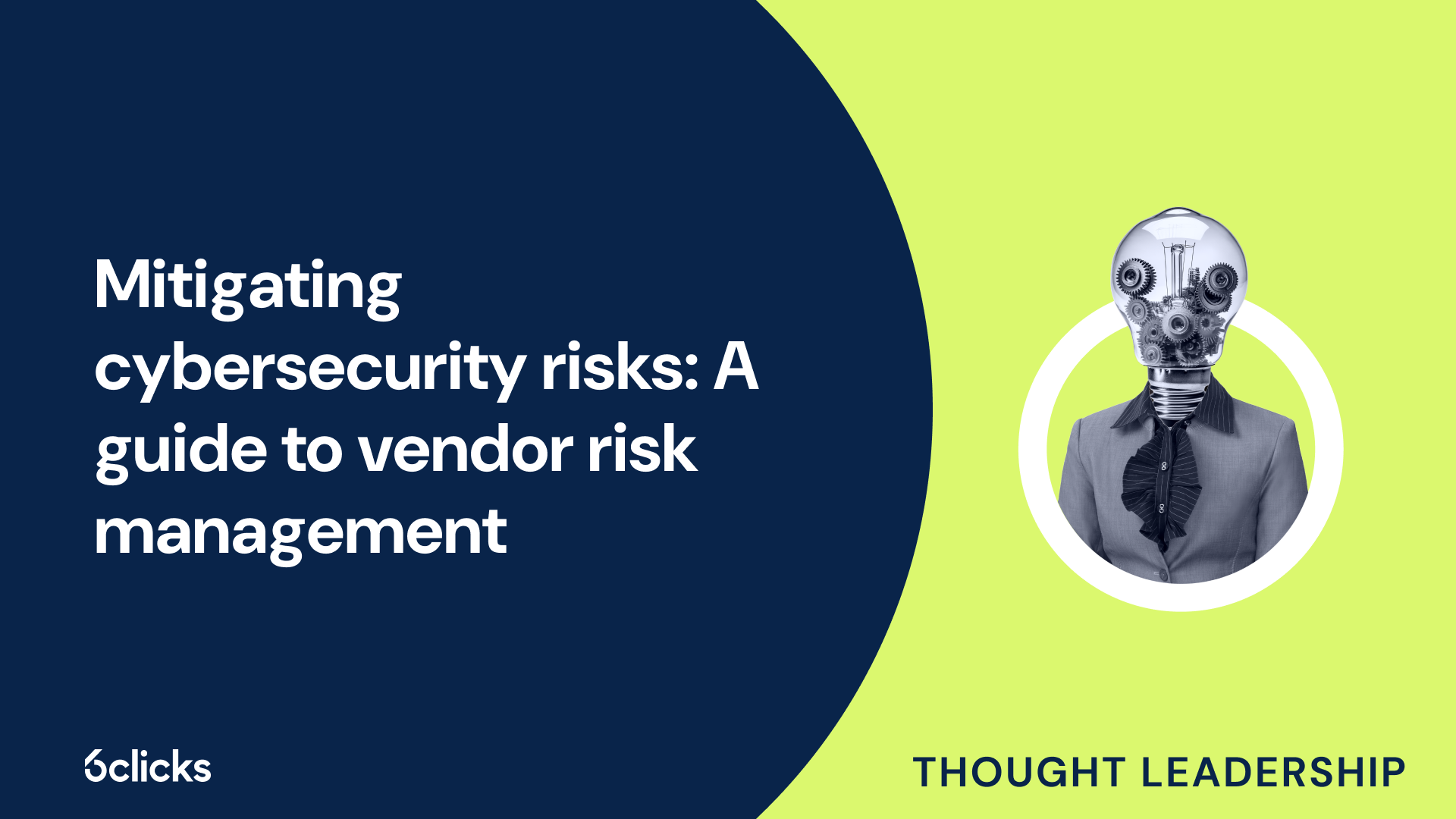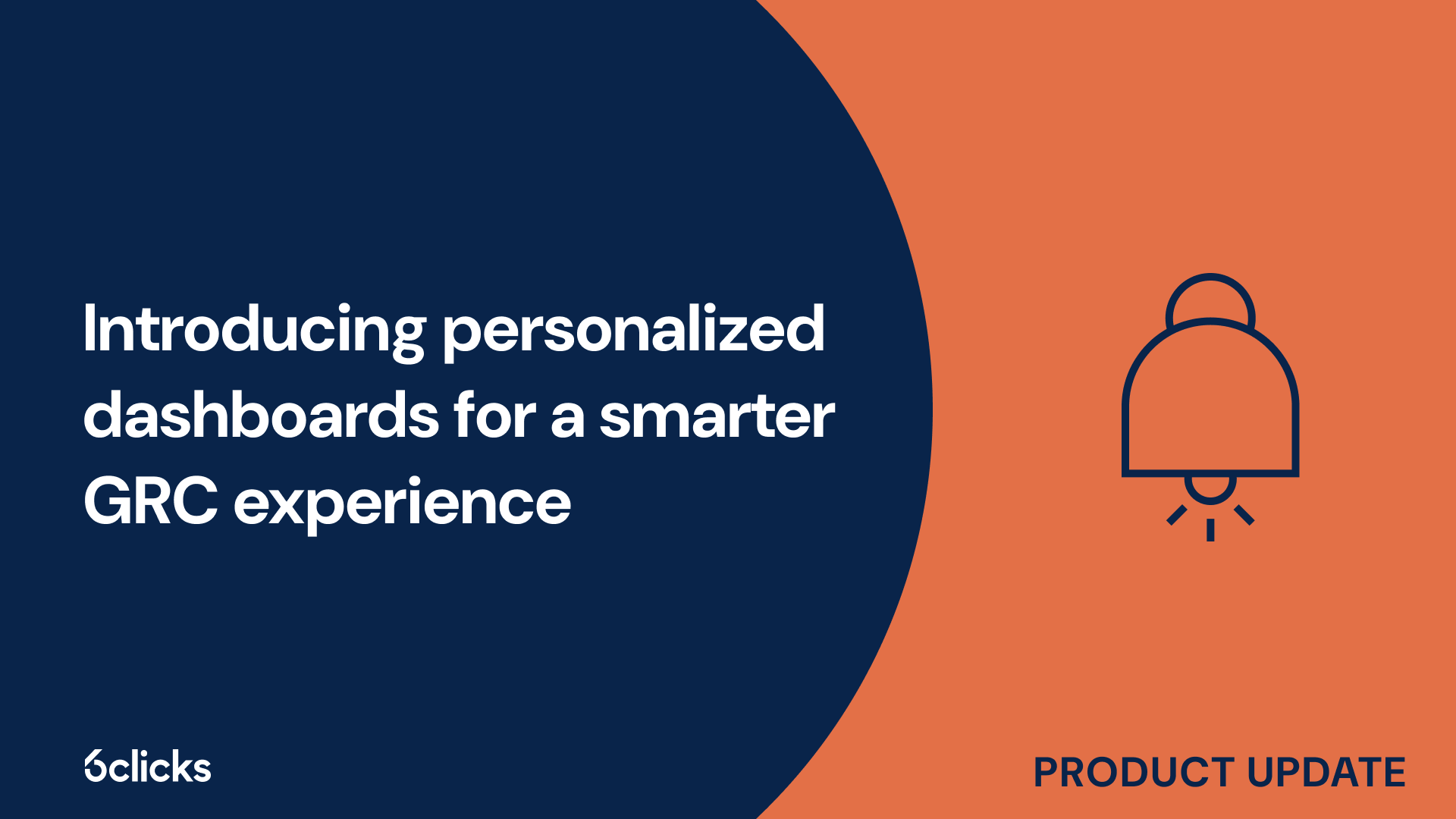The expert's Asnwer to How does HITRUST work?
-1.png?width=314&height=391&name=Group%20193%20(1)-1.png)
How does HITRUST work?
What is HITRUST?
HITRUST, short for Health Information Trust Alliance, is a non-profit organization that provides a comprehensive and standardized framework for managing cybersecurity and privacy risks in the healthcare industry. HITRUST offers the HITRUST CSF (Common Security Framework), which is a set of controls and requirements designed to address the specific needs of healthcare organizations and ensure compliance with various regulatory standards. The HITRUST CSF certification process involves a thorough assessment of an organization's risk profile and security practices to determine their level of compliance. By implementing the HITRUST CSF, healthcare organizations can enhance their security programs, mitigate risks, and demonstrate their commitment to safeguarding personal health information.
Benefits of HITRUST
HITRUST certification offers numerous benefits to healthcare organizations in terms of establishing trust, improving security, achieving compliance, and gaining scalability.
Firstly, achieving HITRUST certification establishes an organization as a trusted business partner within the healthcare industry. This certification demonstrates a commitment to the highest standards of security practices and compliance with regulatory requirements. It provides assurance to stakeholders that the organization has implemented effective measures to protect personal health information.
Secondly, HITRUST certification helps organizations improve their security posture by setting clear standards and control requirements. The HITRUST Common Security Framework (CSF) provides a comprehensive set of security controls that address all relevant industry standards and regulatory factors. By following these guidelines, organizations can proactively manage and mitigate security risks.
Additionally, HITRUST certification offers scalability. The certification process enables organizations to assess their risk profile, identify gaps, and implement appropriate security measures. This ensures that the organization's security programs and controls can adapt to the changing landscape of the healthcare industry.
Moreover, HITRUST certification adds credibility and visibility to organizations. It demonstrates a commitment to meeting regulatory compliance requirements and mitigating security risks. This can help healthcare organizations gain a competitive advantage and attract more business partners.
Furthermore, achieving HITRUST certification reduces the time investment and costs associated with multiple compliance programs. The certification provides a holistic approach to compliance by addressing requirements from multiple regulatory standards and industry frameworks.
Certification process
The HITRUST certification process is a rigorous and thorough assessment that healthcare organizations undergo to demonstrate their compliance with industry standards and regulatory requirements. The process begins with a readiness assessment, through which organizations evaluate their current security practices and identify areas for improvement. Following this, a third-party assessor conducts an independent assessment using the HITRUST CSF. The CSF consists of a comprehensive set of control objectives and control requirements that organizations must adhere to. The assessment process evaluates the organization's implementation of these controls and assesses its overall risk profile. Once the assessment is complete, organizations may receive a preliminary i1 certification or continue to address any identified gaps through corrective action plans. Finally, the organization will receive a final HITRUST certification, marking their achievement of the gold standard in security and regulatory compliance.
Overview of the HITRUST CSF certification process
The HITRUST CSF certification process is a comprehensive and rigorous assessment that evaluates healthcare organizations' security practices and compliance with regulatory requirements. It provides a unified approach to managing and measuring security risk in the healthcare sector.
The process involves multiple steps and components. First, organizations must conduct a readiness assessment to determine their current level of compliance with the HITRUST CSF. They then proceed to conduct a risk assessment, which identifies potential security risks and vulnerabilities, and develop a risk management plan accordingly. Next, organizations implement control requirements based on the risk profile identified in the assessment. These controls are designed to mitigate security risks and adhere to industry standards and regulatory requirements.
Once the controls are in place, organizations undergo an assessment process conducted by an independent third-party assessor firm. This assessment evaluates the effectiveness of the implemented controls and verifies compliance with the HITRUST CSF. Organizations that meet the requirements are awarded HITRUST CSF certification.
Obtaining HITRUST CSF certification offers numerous benefits for healthcare organizations. It enhances their security posture, reduces the risk of security breaches and data breaches, and helps protect personal health information. It also positions organizations as trusted partners for healthcare providers, vendors, and the federal government. Furthermore, HITRUST CSF certification demonstrates a commitment to meeting regulatory standards and compliance requirements, enhancing customer confidence, and differentiating organizations from their competitors in the market.
Interim assessment
An important step in maintaining HITRUST certification is the interim assessment. This assessment is conducted on an ongoing basis to evaluate an organization's compliance with the HITRUST control requirements and their ongoing security practices.
The purpose of the interim assessment is to ensure that the organization continues to meet the high standards set by HITRUST. It helps identify any gaps or areas of improvement in the organization's security practices and control requirements. By conducting regular interim assessments, organizations can proactively address any non-compliance issues and make necessary adjustments to maintain their certification.
During the interim assessment, an independent third-party assessor evaluates the organization's ongoing compliance and security practices. They review the organization's control implementation, policies, procedures, and evidence of compliance. This helps ensure that the organization remains aligned with the HITRUST framework and continues to meet the control requirements.
The interim assessment is a crucial component of the certification maintenance process. It helps organizations monitor and improve their security practices, identify areas of weakness or non-compliance, and take corrective actions as needed. By undergoing regular interim assessments, organizations demonstrate their commitment to ongoing compliance, security, and the protection of sensitive information in the healthcare industry.
Readiness assessment
The readiness assessment is a crucial step in the HITRUST certification process for healthcare organizations. Its purpose is to evaluate an organization's readiness to meet the rigorous regulatory requirements set by HITRUST in the healthcare industry.
During the readiness assessment, organizations typically use the HITRUST MyCSF tool, a comprehensive platform designed to examine and measure an organization's policies, procedures, and controls against the HITRUST Common Security Framework (CSF) requirements. This tool helps organizations identify any gaps or areas that need improvement in their security practices and control requirements.
The readiness assessment involves several steps. First, organizations need to gather and review their existing policies, procedures, and control documentation. They then compare these documents to the HITRUST CSF requirements using the MyCSF tool, which enables them to measure their level of compliance.
Next, organizations identify any gaps between their current practices and the HITRUST CSF requirements. These gaps are documented, and organizations develop remediation plans to address them. This may involve updating or creating new policies and procedures, enhancing security controls, or implementing additional measures to meet the HITRUST standards.
By conducting a thorough readiness assessment, organizations can proactively identify and address any gaps before undergoing the formal HITRUST certification process. This not only helps them improve their security practices but also increases their chances of successfully achieving HITRUST certification, which is considered the gold standard in the healthcare industry.
Final assessment and reporting
Once an organization has completed the readiness assessment and implemented remediation plans, they move on to the final assessment and reporting phase of the HITRUST CSF certification process. This phase involves submitting the validated assessment to HITRUST for their quality assurance review and report generation.
The first step is to ensure that all required documents and evidence are in place and properly organized. This includes policies, procedures, control documentation, and any other relevant materials. The organization then submits their completed assessment through the MyCSF tool.
HITRUST conducts a quality assurance review to ensure the assessment is complete, accurate, and meets their standards. This review process typically takes around six to eight weeks. During this time, HITRUST may request additional information or clarification from the organization.
After the quality assurance review is complete, HITRUST generates a report known as the validated assessment report. This report outlines the organization's compliance with the HITRUST CSF requirements and highlights any areas that may need improvement. The report provides valuable insights and can be used to demonstrate the organization's commitment to regulatory compliance and data security.
Ongoing maintenance of certification
Once a healthcare organization has achieved HITRUST certification, ongoing maintenance is crucial to ensure the certification remains valid and up to date. Regular audits and assessments play a key role in maintaining compliance with the HITRUST Common Security Framework (CSF).
Regular audits help organizations identify any gaps or weaknesses in their security practices and control requirements. By conducting regular assessments, organizations can proactively address any non-compliance issues and implement corrective action plans. These assessments also help organizations stay informed about potential security risks and ensure that they are continuously improving their security programs.
Additionally, staying updated with changes in security requirements is essential for maintaining HITRUST certification. The healthcare industry is constantly evolving, and new threats and regulations can emerge over time. Organizations must stay informed about these changes and update their security practices accordingly to ensure ongoing compliance with the HITRUST CSF.
Healthcare industry impact
The healthcare industry plays a critical role in the well-being of individuals and communities, making it imperative for healthcare organizations to prioritize security and regulatory compliance. With the increasing digitization of healthcare data and the rising number of security breaches, the impact of security risks in the healthcare sector cannot be underestimated. The Health Information Trust Alliance (HITRUST) has emerged as a gold standard in the healthcare industry, providing a comprehensive set of control requirements and a risk-based approach to ensure the security and privacy of personal health information. This article explores how HITRUST works and the impact it has on healthcare organizations in meeting their regulatory requirements.
Regulatory requirements for healthcare organizations
Regulatory requirements play a crucial role in the healthcare industry, ensuring that organizations protect sensitive patient information and maintain the highest standards of security and privacy. To achieve HITRUST certification, healthcare organizations must meet these rigorous regulatory requirements.
One of the most important regulatory factors is the Health Insurance Portability and Accountability Act (HIPAA), which establishes privacy and security standards for protected health information (PHI). Healthcare organizations must comply with HIPAA regulations to safeguard patient data and prevent unauthorized access or breaches.
In addition to HIPAA, healthcare organizations must consider other federal government regulations and industry standards when pursuing HITRUST certification. These may include the Federal Information Security Management Act (FISMA), Payment Card Industry Data Security Standard (PCI DSS), and the General Data Protection Regulation (GDPR), among others.
A key aspect of achieving HITRUST certification is taking a risk-based approach to compliance requirements. This involves conducting thorough risk assessments to identify potential vulnerabilities and implementing appropriate controls to mitigate these risks. By adopting this approach, healthcare organizations can better protect patient information and minimize the chances of security incidents or data breaches.
Meeting the regulatory requirements for HITRUST certification is essential for healthcare organizations. It demonstrates a commitment to maintaining compliance and upholding the gold standard of security practices in the healthcare sector. By adhering to these regulations, organizations can effectively mitigate risk, safeguard personal health information, and build trust with patients and other stakeholders.
Impact on business associates of health care organizations
HITRUST certification has a significant impact on business associates of healthcare organizations. Business associates are third-party entities that handle, process, or store protected health information (PHI) on behalf of a healthcare organization. These entities may include vendors, contractors, consultants, or any other organization that has access to PHI.
For business associates, achieving HITRUST certification is crucial as it demonstrates their commitment to meeting strict security and privacy requirements in the healthcare industry. By obtaining this certification, business associates enhance their reputation and gain a competitive advantage in the market. Healthcare organizations are more likely to choose certified business associates as they can rely on their compliance with regulatory standards and the secure handling of PHI.
HITRUST certification also affects the compliance requirements for business associates. It ensures that they adhere to a comprehensive framework that addresses regulatory factors such as the Health Insurance Portability and Accountability Act (HIPAA) and other relevant industry standards. By aligning with these requirements, business associates can demonstrate their ability to protect patient information and mitigate security risks effectively.
Furthermore, HITRUST certification plays a vital role in ensuring security and privacy practices among business associates. It promotes the implementation of robust security controls, risk assessments, and comprehensive policies and procedures. This helps to create a culture of privacy and security within the organization, reducing the risks of security breaches and unauthorized access to PHI.
Gold standard for security practices and risk management solutions in the healthcare industry
HITRUST serves as the gold standard for security practices and risk management solutions in the healthcare industry. Its Common Security Framework (CSF) is a comprehensive set of controls and requirements that healthcare organizations can implement to address their specific security, privacy, and regulatory needs.
The CSF incorporates healthcare-specific security practices and addresses regulatory requirements such as the Health Insurance Portability and Accountability Act (HIPAA) and other industry standards. It provides a flexible and scalable framework that allows organizations to customize their security programs based on their specific risk profile and regulatory environment.
Achieving HITRUST CSF certification offers several benefits and advantages. Firstly, it demonstrates an organization's commitment to the highest level of security practices and risk management solutions in the healthcare industry. This enhances the organization's reputation and instills confidence in its ability to protect sensitive patient information.
Additionally, HITRUST CSF certification helps organizations streamline their compliance efforts by providing a holistic approach to regulatory requirements. By aligning with HITRUST's control objectives and implementation levels, organizations can more efficiently navigate the complex landscape of regulatory standards and demonstrate their compliance to regulators and healthcare industry stakeholders.
Risk management and control requirements
In the healthcare industry, risk management and control requirements are of utmost importance to ensure the protection of sensitive patient information and comply with regulatory standards. HITRUST CSF (Common Security Framework) provides healthcare organizations with a comprehensive framework that incorporates industry-specific security practices and addresses regulatory requirements, such as HIPAA. By adopting HITRUST CSF, organizations can customize their security programs based on their specific risk profile, allowing them to effectively manage and mitigate security risks. HITRUST CSF certification demonstrates an organization's commitment to the highest level of security practices and risk management solutions in the healthcare industry. This certification not only enhances the organization's reputation but also instills confidence in stakeholders regarding its ability to protect personal health information. Moreover, HITRUST CSF helps streamline compliance efforts by providing a holistic approach to regulatory requirements, ensuring organizations can efficiently navigate the complex landscape of control requirements. By aligning with HITRUST's control objectives and implementation levels, healthcare organizations can demonstrate their compliance to regulators and stakeholders, mitigating the risk of security breaches and non-compliance.
Risk-based approach to compliance requirements & risk assessments
In the healthcare industry, compliance requirements and risk assessments are essential to maintaining the privacy and security of personal health information. One approach that healthcare organizations use to meet these requirements is a risk-based approach.
A risk-based approach involves identifying and evaluating potential risks to the confidentiality, integrity, and availability of data. This includes assessing the likelihood and impact of security breaches and other security risks. By understanding the specific risks faced by their organization, healthcare providers can prioritize their efforts and resources accordingly.
Compliance requirements dictate the necessary security practices and control requirements that healthcare organizations must adhere to. These requirements are often complex and continuously changing due to regulatory factors and evolving industry standards.
Risk assessments play a crucial role in ensuring compliance with these requirements. They help healthcare organizations identify any gaps or vulnerabilities in their current security programs and controls. Through this process, organizations can develop and implement corrective action plans to mitigate those risks.
By taking a holistic approach to compliance requirements and risk assessments, healthcare organizations can effectively manage their risk profile and protect sensitive data. Implementing a risk-based approach ensures that organizations are consistently evaluating and addressing potential risks to their security and regulatory compliance.
Control objectives to mitigate security breaches, data loss, and privacy issues
HITRUST CSF certification helps healthcare organizations implement specific control objectives to mitigate security breaches, data loss, and privacy issues. These control objectives are designed to ensure the security and privacy of personal health data.
One of the control objectives is to establish and maintain a security program. This includes implementing policies, procedures, and controls to protect personal health information from unauthorized access, modification, or disclosure. This objective helps healthcare organizations prevent security breaches and maintain the integrity of data.
Another control objective is to implement a risk management program. This involves conducting regular risk assessments to identify potential vulnerabilities and threats to personal health data. By evaluating and mitigating these risks, healthcare organizations can reduce the likelihood of data loss and security breaches.
Implementing access controls is another important control objective. Healthcare organizations need to ensure that only authorized individuals have access to personal health information. This includes implementing user authentication, role-based access controls, and encryption measures to protect data from unauthorized access or disclosure.
Safeguarding the physical environment is also a control objective of HITRUST CSF certification. This involves implementing measures to protect the physical infrastructure where personal health information is stored or processed. This includes physical access controls, video surveillance, and proper disposal of sensitive information to prevent data loss or unauthorized access.
By implementing these control objectives, healthcare organizations can mitigate security breaches, data loss, and privacy issues, ultimately ensuring the security and privacy of personal health data. HITRUST CSF certification provides organizations with a comprehensive framework to assess and address these control objectives in a systematic and standardized manner.







